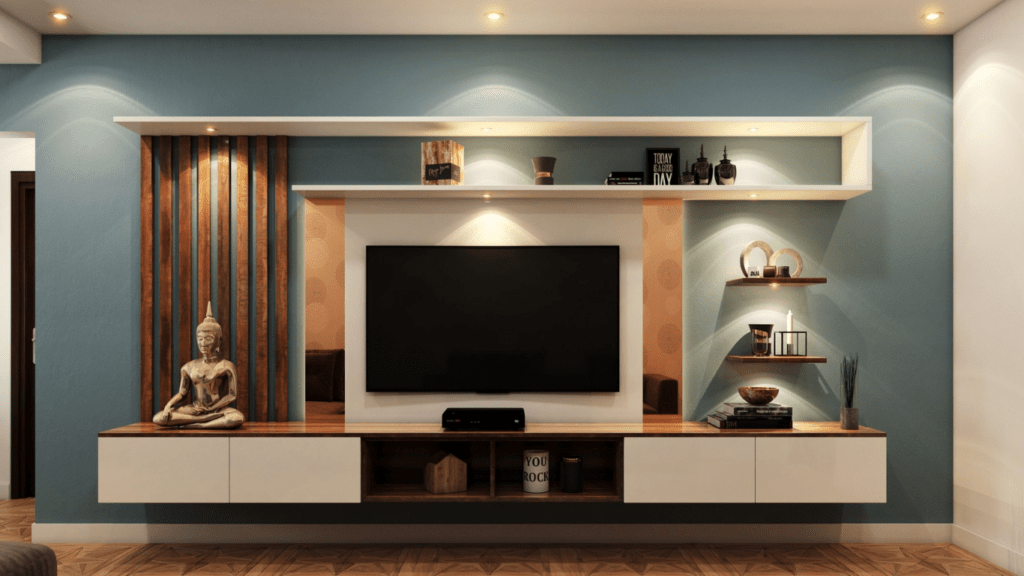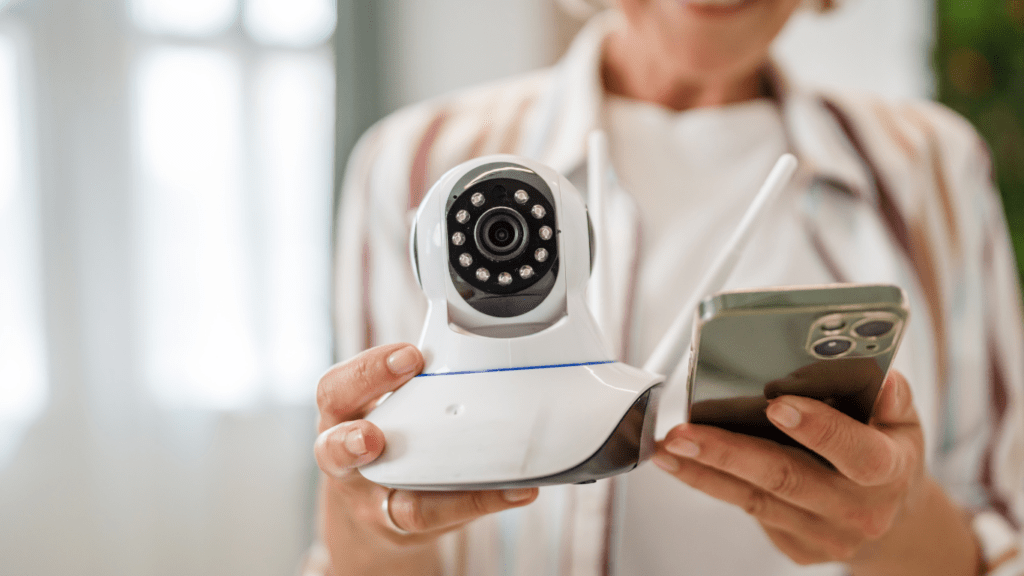Understanding Smart Home Entertainment
Smart home entertainment systems integrate advanced technology to create an immersive and convenient experience. These systems utilize a variety of devices and connectivity options to deliver seamless entertainment. Smart TVs, voice assistants, and streaming devices are central components of this high-tech ecosystem.
Core Components
- Smart TVs: These devices offer internet connectivity, streaming apps, and voice control capabilities. For example, brands like Samsung and LG provide models with built-in AI for tailored viewing recommendations.
- Voice Assistants: Systems like Amazon Alexa and Google Assistant control smart gadgets through voice commands. Users adjust volume, change channels, or search for content without using remotes.
- Streaming Devices: Amazon Fire Stick, Roku, and Apple TV transform regular TVs into smart ones. These devices access thousands of streaming services, enhancing content variety.
Connectivity and Integration
Interconnectivity among devices defines smart home entertainment. Systems use Wi-Fi and Bluetooth for seamless communication. For instance, one connects speakers, lights, and TVs to sync with voice assistants, creating a unified entertainment environment.
Personalized Experience
AI and machine learning enhance personalization. These technologies analyze viewing habits and preferences, offering tailored content suggestions. For example, Netflix and Hulu use algorithms to recommend shows based on past viewing.
Understanding smart home entertainment means recognizing the synergy between devices and technologies. It’s about achieving an interlinked system that simplifies and enriches home leisure.
Key Features of Modern Smart Home Entertainment Systems
Modern smart home entertainment systems provide an unmatched experience through innovative and interconnected technologies. Each component is designed to work seamlessly, giving users convenience, comfort, and high-quality media.
Seamless Integration
Seamless integration ensures all devices work harmoniously. Smart TVs, speakers, and streaming devices connect through Wi-Fi or Bluetooth. This interconnected ecosystem lets users control various devices from a single interface. For instance, I can use my smartphone to lower the volume on my smart speakers or switch channels on my smart TV. Interoperability between brands has improved, making it easier to mix and match products like a Roku streaming stick with a Samsung TV.
Voice Control
Voice control devices amplify user convenience by providing hands-free operation. I use voice assistants like Amazon Alexa or Google Assistant to manage daily entertainment activities. They not only play specific shows or movies with simple voice commands but also allow me to adjust volume and lighting or even search for new content. Voice recognition software continuously improves, offering more accurate responses and a broader range of commands.
High-Definition Audio and Video
High-definition audio and video enhance immersion in entertainment activities. Smart home systems now support 4K UHD resolution and HDR technology, delivering lifelike images. High-fidelity sound systems with Dolby Atmos transform regular soundtracks into three-dimensional audio experiences. This combination ensures I experience both visual and auditory excellence, whether watching a movie, playing a game, or listening to music.
Popular Smart Home Entertainment Devices
Various high-tech devices drive the smart home entertainment experience, seamlessly integrating comfort and functionality.
Smart TVs
Smart TVs combine streaming capabilities and internet connectivity to enhance viewing. Models from brands like Samsung, LG, and Sony offer 4K and 8K resolutions with HDR10+ support. These TVs come equipped with built-in voice assistants like Alexa or Google Assistant, enabling voice control for hands-free navigation and content search.
Streaming Devices
Streaming devices transform standard TVs into smart TVs, offering access to a plethora of content. Devices like Amazon Fire TV Stick, Roku, and Apple TV 4K support high-definition streaming, including 4K and HDR. They come with remote control options that include voice search and integration with voice assistants, providing additional convenience.
Smart Speakers
Smart speakers serve as the hub for home entertainment systems. They include Amazon Echo, Google Nest, and Apple HomePod. These speakers deliver high-quality sound and feature voice assistants for controlling smart home devices. Advanced models also integrate with other entertainment devices, allowing users to play music, control the TV, and manage home settings using voice commands.
Each device contributes to creating an immersive, connected home entertainment environment.
Setting Up Your Smart Home Entertainment System

Creating an advanced smart home entertainment system combines modern devices with robust connectivity. Here’s how to choose the right components and ensure network reliability for seamless integration.
Choosing the Right Components
Selecting components that match your preferences is vital for a successful setup.
- Smart TVs: Brands like Samsung, LG, and Sony offer models with 4K UHD resolution, built-in streaming apps, and voice assistant integration.
- Streaming Devices: Gadgets like Amazon Fire TV Stick, Roku, and Apple TV enhance regular TVs with a smart interface and extensive content libraries.
- Voice Assistants: Devices such as Amazon Echo and Google Nest control your entertainment system through voice commands.
- Sound Systems: Options like Sonos and Bose provide high-definition audio, supporting Dolby Atmos for a theater-like experience.
- Universal Remotes: Products like Logitech Harmony streamline control of multiple devices using one remote or a smartphone app.
Connectivity and Network Requirements
Robust connectivity ensures all components function seamlessly.
- Wi-Fi Coverage: Ensure your Wi-Fi network covers all areas. Use mesh systems like Eero or Google Nest Wi-Fi for strong signals throughout your home.
- Internet Speed: Higher speeds are necessary for streaming 4K content. Plans offering at least 25 Mbps per device are recommended.
- Ethernet Connections: Use wired connections for devices like smart TVs and streaming boxes to reduce lag and buffering.
- Bluetooth: Enabled devices like smart speakers should support Bluetooth for direct connections and an uninterrupted experience.
- Network Management: Tools like Quality of Service (QoS) prioritize bandwidth for entertainment devices, ensuring smooth operation during high usage.
Integrating these factors will set the stage for an enhanced, connected home entertainment setup.
Pros and Cons of Smart Home Entertainment
Smart home entertainment systems offer numerous benefits; however, there are also some potential drawbacks to consider.
Advantages
- Convenience
Smart home entertainment systems simplify control. I can use voice commands to play my favorite shows, adjust volume, and switch channels without lifting a finger. Devices like Amazon Echo and Google Nest add hands-free control to my home entertainment experience. - Integration
Integration among devices creates a seamless experience. My smart TV, streaming device, and sound system work together, managed through a single interface. This harmony enhances my entertainment setup. - Personalization
AI and machine learning analyze my preferences and viewing habits. They recommend content tailored to my tastes, making it easier to discover new shows and movies that I’ll probably enjoy. - High-Quality Audio and Video
Advanced features, such as 4K UHD resolution and Dolby Atmos sound, provide an immersive experience. My smart home entertainment system ensures both visual and auditory excellence with these technologies.
- Cost
High-quality smart home entertainment systems can be expensive. Investing in smart TVs, streaming devices, and high-end sound systems might strain my budget. Ongoing costs, like subscription services, add to the expenses. - Complexity
Setting up and maintaining a smart home entertainment system requires technical know-how. If I’m not tech-savvy, troubleshooting issues or configuring devices might be challenging. - Privacy Concerns
Devices that collect data on my viewing habits raise privacy issues. Voice-activated assistants, in particular, listen for commands, which might concern those wary about data privacy. - Connectivity Dependence
Smart home entertainment systems rely on robust internet connections. Weak Wi-Fi or network issues can disrupt my viewing experience, causing lagging or buffering problems. Ensuring strong connectivity is essential for optimal performance.
Future Trends in Smart Home Entertainment
The future of smart home entertainment looks promising with advancements in AI and immersive technologies like VR and AR. These trends will redefine how we interact with our entertainment systems.
Artificial Intelligence
AI in smart home entertainment personalizes experiences by analyzing user preferences and habits. This technology makes content recommendations more accurate, enhancing satisfaction. For example, AI-powered platforms like Netflix and Spotify curate playlists and suggest shows based on viewing history.
AI also aids in voice recognition and command accuracy, making interactions with voice assistants smoother. Devices using AI can understand context better, providing relevant responses and performing tasks more efficiently. Smart assistants like Amazon Alexa can adjust lighting, control playback, and even answer queries about ongoing shows.
Virtual and Augmented Reality
Virtual and augmented reality (VR and AR) transform the way we experience entertainment by creating immersive environments. VR offers fully immersive experiences through devices like Oculus Rift or HTC Vive, enhancing gaming, movie watching, and even virtual tours. Users can feel part of the content, experiencing it in a 360-degree view.
AR, on the other hand, overlays digital content onto the real world. This technology enhances interactive gaming, educational experiences, and sports viewing. Devices like Microsoft HoloLens and AR-enabled smartphones can project information and graphics into the physical space around users, adding an extra layer of engagement.
Future trends in VR and AR will likely focus on improving resolution, reducing latency, and creating more intuitive interfaces. These enhancements will make virtual experiences more seamless and natural, pushing the boundaries of home entertainment.



 Founder & CEO
Irenee Nunezerro is the visionary founder and CEO of Luxe House Maker, with over 15 years of experience in luxury real estate and interior design. Known for her expertise in blending opulence with innovation, Irenee launched Luxe House Maker to provide readers with comprehensive updates on the latest trends in high-end properties, interior décor, and smart home technology. Her passion for creating luxurious, technologically advanced spaces has positioned Luxe House Maker as a leading resource for those seeking to elevate their lifestyles. Irenee’s commitment to delivering cutting-edge content ensures that Luxe House Maker stays at the forefront of the luxury market.
Founder & CEO
Irenee Nunezerro is the visionary founder and CEO of Luxe House Maker, with over 15 years of experience in luxury real estate and interior design. Known for her expertise in blending opulence with innovation, Irenee launched Luxe House Maker to provide readers with comprehensive updates on the latest trends in high-end properties, interior décor, and smart home technology. Her passion for creating luxurious, technologically advanced spaces has positioned Luxe House Maker as a leading resource for those seeking to elevate their lifestyles. Irenee’s commitment to delivering cutting-edge content ensures that Luxe House Maker stays at the forefront of the luxury market.
